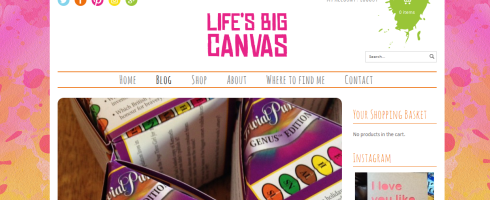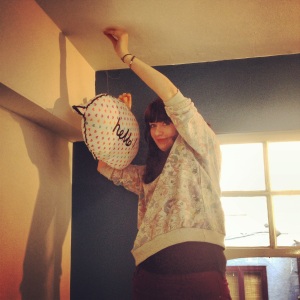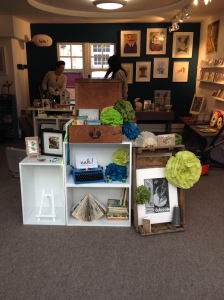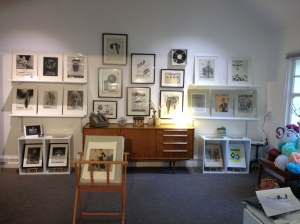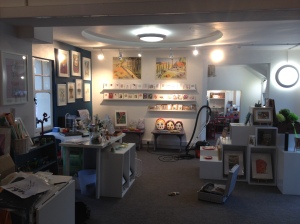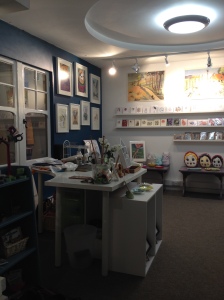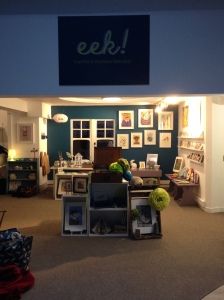I’ve been chatting online with other makers and creatives about what annoys us about our jobs. I’d never do a blogpost on how annoying customers can be, because that’s unprofessional and unfair, and there are lots of blogs on how difficult pricing is and how irritating it is to turn up at a craft fair and find an Avon lady.
But what I did decide to do was write a blog about what crafters/creatives/makers do to annoy each other. Once I asked the question I was inundated with things our colleagues do that annoy us – so I’ll list them here. Be aware, some of them will probably contradict each other, because this isn’t a list from just one person. It should also be yet another reminder that there isn’t just one correct opinion on anything. Some points are longer than others – generally the ones I have an interest in, or have seen more of. The rest I’ve expanded on with information given by the person who nominated the grievance, meaning they might be incredibly short.
Finally, we really couldn’t decide what to call ourselves. Some see ‘crafter’ as a badge of honour, whilst others see it as an insult. So for ease, in this blogpost, I’ll be using the term MAKER.
1. Nicking each other’s ideas/accusing someone of nicking your ideas
I’ve put this as number one, even though this isn’t even in order, because it is the singlest scummiest thing to do, and I think other makers think the same, because it was the most mentioned thing.
I wrote a blog about this recently, but small businesses stealing from each other (in my opinion) is much worse than a big business stealing from a small business. Big businesses have design departments – they pay people to come up with designs, and often it’s those people who are to blame for googling and stealing images. Urban Outfitters, for example – yes, they should check the design isn’t stolen, but they’re massive companies, and they drop the ball now and again.
A small company however – that’s usually ONE person working alone, stealing an idea from someone they follow on social media. You might see an Instagram of someone who makes shoes with cat ears and think, ‘ah cute! I can see how they’ve made those’ – it’s then a scummy step to think, ‘I can see how it’s made, so I could do that, (maybe charge a little less) and make some money (while also plagiarising the rest of the shop while I’m at it)’.
I also had flak for naming and shaming the company in my last post – apparently I shouldn’t have called them on their scumminess. If it had been my work, I would have followed Kim’s advice – as it was it suited the subject I was writing about to name that person. In the interests of a full and fair post though, I will tell you that calling out people who steal can piss off other makers, and not just the one who has done the stealing.
2. Boasting about how many sales you’ve had/how busy you are
“Just posted out 95 orders!”
“Wow, can’t keep up with making these guys!”
“Panicking about getting all the orders I have made in time!”
You might wonder what’s wrong with updating with this. Well nothing, really… but if you’re at home having a break from making stuff and having a bad day for sales, and then it can make you feel like shit. Consider it as a customer, and you might think, ‘well, if you’ve had so many orders, you don’t need another one’.
There’s a fine line between a good promotional tweet using this basic premise. You might want to make sure customers know you’re running low on something so they can order it before it runs out, and really there’s nothing wrong with a tweet saying you’ve had a lot of orders – just think carefully about your wording, and imagine reading it as a maker having a bad week for sales.
Most importantly, whatever you do, don’t lie about how busy you are to appear to be doing better than you are – don’t tell someone at a fair that you haven’t had any sales, and then tweet about how you sold out of everything.
3. Going on and on about where your stuff has been featured, or who wears it
It’s exciting being featured somewhere, and even more amazing someone famous bought something you made! Please tell me about it, and I’ll be very happy for you. However, don’t dine out on it for too long, or you start to look a bit silly. Corinne Bailey Rae bought one of my necklaces once – she was lovely, and was at an event at our shop where she sang. If I’d found a photo of her wearing the necklace, I’d have smiled and shared it. However, I don’t feel like I can mention it much because it surely won’t make any difference as to whether someone will buy a necklace, and it might put someone who doesn’t like her off. I’ve never bought anything because someone famous wore it – I’m sure some people do, but are they really looking for handcrafted stuff?
4. Not charging enough
This has been well covered here so I don’t think we need to dwell any more on it. But basically when you’re pricing, check your competitors who are making similar items, and make it THE SAME price, not cheaper. Makers really hate being undercut.
5. Charging too much
Conversely, if the difference is more than 10%, you should check WHY the items is so much more expensive than yours. It may be that this item is made in a different way to yours, the maker has more training, or a number of other reasons. For example, you decide to make a corset (chosen because it is a skilled and difficult thing to make, of which I have no experience) – you use plastic bones and machine stitch it. You work out a cost, and look online to find people charging more than double. This doesn’t necesarily mean you’re underpricing yourself – the other corset makers may be trained, they may be using real bone, they may be handstitching, their fabric may be real silk whereas yours is synthetic. There’s a reason some people charge what they do – it’s not you undervaluing yourself every time, and nothing makes makers more angry than you equating a piece of hobby making to something they have trained long and hard to do. Which brings us to…
6. Doing it to make money, not for the love of making, see also jumping onto every bandwagon going
I feel slightly defensive about this one, because I am guilty of it. Some makers make a bit of everything, and it’s purely because they just love making things. Unfortunately this has a tendency to piss off other makers because you might start making something which is their sole item. Not having a ‘speciality’ can be seen as being a ‘jack of all trades’.
However, I’ve definitely come across people who I think are more guilty than me of this, so let’s try to be objective – even though I’m going to use an actual example, I won’t name them. You start off drawing, and you make your drawings into greeting cards. You then see someone who makes their drawings into jewellery, so you ask how it’s done, and you start doing this too. This, I’m sure, will be seen as ‘normal’ by most people, and it makes sense to what you already make. You then decide you’re going to start making head dresses out of flowers because someone has told you they will sell well. A friend of yours who makes head pieces is upset, understandably, because they have trained as a milliner and this is the first time you’ve shown any interest in making head pieces. (You also start selling these head pieces cheaper than theirs, because you haven’t had any training) – has this crossed a line? I certanly believe it has, and I’d like to think most other makers would also agree.
This is partly why I love doing blogposts like this – it’s made me try and focus my spread and from now I’m going to make sure everything I make includes paper in some way.
7. Overly cutesy name/referring to yourself in the third person
“The Button Princess has been busy today, making lovely things for you to buy!”
Whilst this annoys some makers, it can actually work with your branding, so it’s just something to keep an eye on. I personally don’t find it as offensive as some people who emailed me, so I guess it depends what circles you run in.
8. Complaining about how hard it is/how few sales you have
Sometimes things as a maker are hard – but save it for your personal profile on Facebook. Don’t put it on your business page. Your customers don’t want to think you hate every minute of making things for them to buy! They want to know you make it with love, especially for them. Plus, do you really want pity sales?
9. Using comic sans (and other fonts) in your branding
Comic Sans is the butt of many jokes involving fonts – if that makes no sense to you, don’t worry. Just don’t use Comic Sans if you want to be taken seriously – that’s really all you need to know.
*EDIT* wow, this really did open a big old can of worms! I received a message from someone anonymous which I’m going to quote.
I will continue to use Comic Sans without a care in the world – I likes it; It’s nice and curvy, clear, easy to read and has been proved to be dyslexia friendly. I used it all the time as a teacher and I won’t be apologising for continuing to use it ALL the time
10. Complaining about a specific customer
If you had a disagreement with a customer, don’t make it public. It just looks unprofessional. Have a moan on your personal profile, if you really need to, but remember to check your privacy settings so that only your friends can see it. Even better, have a whinge in a craft forum.
11. People saying how easy the thing you do is/saying ‘I could do that’
Customers saying this is pretty annoying – other makers saying this, I think, is unforgiveable! Going to someone’s stall and saying ‘Oh, that’s just resin, I’ve used that, it’s easy’ – well, great that you recognised the method, you’re obviously knowledgable on crafting methods, but mastering anything is never ‘easy’. I used to have the pleasure of selling some resin items another company made, and it meant I can always tell the difference between good resin and bad resin, and believe me there’s a chasm.
12. Being self-important/snobbery
Conversely just because you’ve mastered something doesn’t mean you’re ‘better’ than anyone else. Someone got in touch to say they find some people snooty about having their items touched by customers and their children – ‘don’t touch the precious things!’
Personally, I’ve had emails from people about this with regards to Reet Sweet; their slogan of campaigning against ‘crap craft’ refers to (I believe) its designer based neo-craftiness, the fact it’s all handmade and not bought in, and that on the whole the people who sell there are dedicated to their craft and it’s not like a church fete. However, if you apply to something and are rejected, it’s hard not to think it’s because you’re the sort of crap craft they don’t like, and I’ve had to console a few tearful people.
13. Like for a like on facebook/buying followers
Makers are not stupid. We know when you’ve bought followers on Instagram or twitter. We can also see you participating in ‘like for a like’ groups on Facebook. Are your likers all really likers? Or are they just going to ‘unlike’ you when you’ve liked them all back and clogged your newsfeed?
14. People selling unrelated items alongside the things they make
I nearly put this with point 6, but it’s not really the same thing.
I recently saw someone selling dog collars, stained glass and jewellery. They were a lovely person, but their stall just didn’t make sense. I chatted to this person, and she just hadn’t decided what to focus on yet, so was doing her market research by selling everything she makes on her stall, seeing what sells and what people like, and then narrowing things down.
Sometimes however, you come across someone selling, for example, framed prints of their drawings and their drawings printed on cards – but then some purses. I guarantee, after talking to people in shops and at fairs, more often than not that’s a friend of theirs who’s helping them or who they feel sorry for. Just be aware if it looks weird, it might piss off other makers who will equate you with the people in number 6.
15. Setting up a facebook profile instead of a page
Just an absolute no-no. If you are a maker, you MUST understand the difference between profiles and pages. I’m very careful who I befriend on Facebook, because my privacy settings are locked tight. I will like a page, with no issues, but I won’t befriend a profile called something like ‘Settle Artisans Fair’ – I’m not saying this profile are going to be awful, just that once I befriend it, their friends can see everything I do, and they have thousands of friends. It goes against the whole of point 18 later on.
16. Makers who have ‘spotless houses’
A friend said this, and it made me chuckle. Not every maker works in a spotless studio, with everything in its place, no matter what those articles in Mollie Makes would have you believe. I videoed my studio here if you want to see what mine looks like.
17. Having your facebook post directly to twitter/saying you’re ‘on twitter’ when you aren’t really
This is mine – seriously, if you’re a maker and you don’t like using Twitter, please don’t just set up your facebook page to send everything to Twitter. Having that on twitter is NOT ‘better than having nothing’. This is also not ‘giving in, because you have to be on twitter these days’. This is not ‘being on twitter’ – in my opinion not posting anything on twitter is better than having auto-tweeting from facebook.
*EDIT* It’s been pointed out that this shouldn’t really be something that we should worry about pissing off other makers with – it should be about not pissing off anyone with the way we use twitter.
18. Being too personal on your business page
This is the only bit I’m cutting and pasting, because I didn’t want to rewrite it.
Another one that does for me is people who use what should be business pages to give us too much personal information about themselves. Friendly chatty type postings – had a great event today, lovely to meet you all, thanks for buying, etc – is nice and reminds us subtly that it’s an independent business with one person running it. Telling me your life history – mum of 8, crafting since 6 months old, how many pets, where you live, colour of your christmas tree, etc – when all I want is to know more about the things you make is completely different. A business page is that and if I wanted to know about your day to day life, you’d be on my friends list – simples…
What about you? What annoys you about other makers if you are a maker? What don’t you like to see as a customer? I’d love to hear from you!

